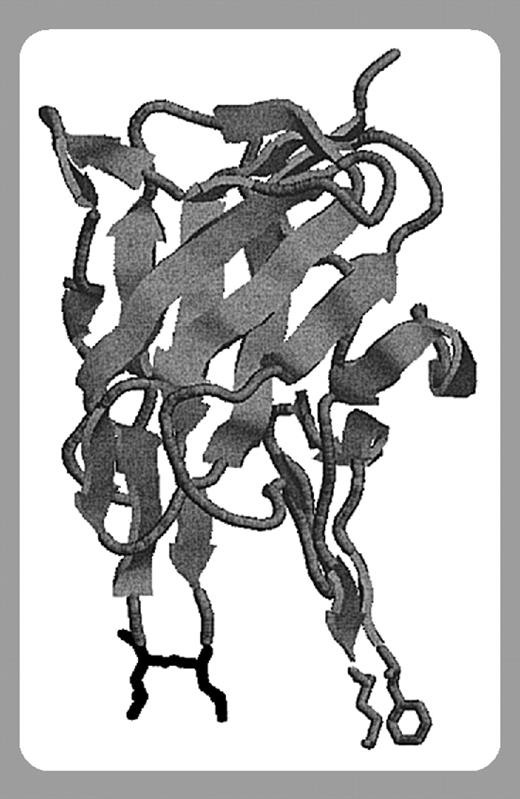Inhibitory alloantibodies against factor VIII (FVIII) develop in up to a third of patients with severe hemophilia A who undergo cofactor replacement therapy. Autoantibodies to FVIII can also arise in the general population, for example in the elderly and in postpartum women. Clinical management of these immune responses can be challenging, and current treatments are often extremely expensive. Research into improved therapies for these patients has proceeded along 2 complementary pathways: (1) efforts to develop less immunogenic versions of FVIII, and (2) management of the immune response itself. Despite the large size of the protein, the FVIII epitopes cluster in only a few distinct locations. The most problematic region of FVIII, in terms of its antigenicity, is the C2 domain. This domain resides at the carboxy-terminal end of the protein, where it mediates attachment of FVIII to von Willebrand factor, and of FVIIIa to activated membrane surfaces. The binding of antibodies disrupts these interactions, thus neutralizing the cofactor and resulting in serious bleeds.
Gilles and colleagues (page 2617) present here the results of a pilot study in which an anti-idiotype antibody response was generated against an inhibitory monoclonal antibody in a mouse model system. Their elegant study is an outgrowth of earlier investigations using the patient-derived, inhibitory monoclonal antibody BO2C11.1 This antibody is specific for the C2 domain of FVIII, and a crystal structure of the Fab fragment from BO2C11 bound to the C2 domain showed that the epitope comprised several loops at one end of the molecule.2 The epitope was essentially identical to the region that had been proposed to be the membrane-binding site on the C2 surface.3 BO2C11 is clearly representative of a large fraction of the inhibitory antibodies found in patients, many of which interfere with membrane binding. In the present study, mice were immunized with BO2C11, and one of the resulting anti-idiotypic monoclonal antibodies, mAb14C12, blocked the inhibitory properties of BO2C11 in hemophilic mice that had received therapeutic infusions of FVIII. It also neutralized a significant fraction of polyclonal inhibitory antibodies from patient plasma samples. These results support the concept that anti-idiotypic antibodies may be developed into therapeutic agents to reverse the effect of inhibitory antibodies, thus allowing patients to regain hemostasis.
Both the C2 domain and antibody VH regions are beta-sandwich structures, and each consists of a relatively rigid scaffold that presents loops at each end of the molecule. When the conformation of mAb14C12 was modeled and compared with the C2 structure using algorithms allowing for different connectivities between beta strands, a significant structural homology was found. The distinctive hydrophobic projection from one C2 loop, consisting of residues Leu2251-Leu2252, was duplicated in the antibody model structure, and additional residues were similar to those at analogous positions in the C2 domain structure. In addition to its medical relevance, this study is very intriguing from a structure/function standpoint, as these 2 similar yet distinct molecular surfaces mediate specific, high-affinity binding to a series of antibody inhibitors.


This feature is available to Subscribers Only
Sign In or Create an Account Close Modal